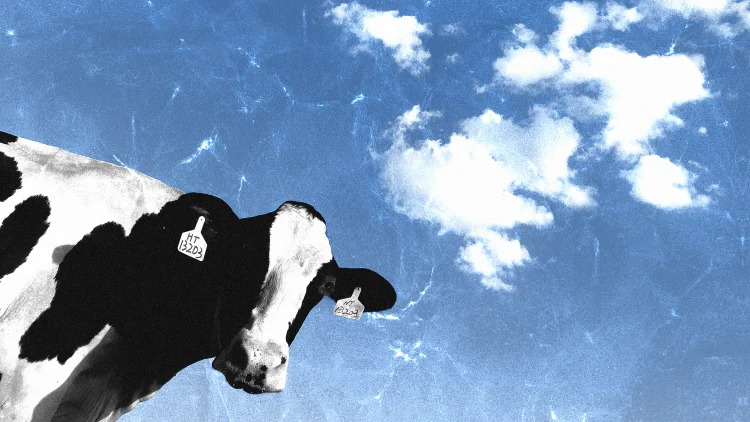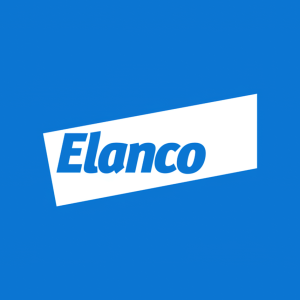A Climate Solution Is Here, and It Has Four Stomachs
Elanco Animal Health's CEO, Jeff Simmons, discusses a climate solution for the dairy and meat industry in a Fast Company article. He highlights that cattle can be part of addressing global hunger and climate issues. The FDA recently approved Bovaer® (3-NOP), Elanco's methane-reducing feed ingredient for lactating dairy cattle. This product can lower methane emissions by around 30%, equivalent to 1.2 metric tons of CO2e emissions annually per cow.
Simmons emphasizes the importance of climate neutral farming and introduces tools like UpLook for measuring greenhouse gas emissions and Athian's carbon insetting marketplace. These innovations aim to help farmers reduce, measure, and monetize emission reductions, benefiting the entire food chain. The goal is to achieve climate neutral livestock farms within this decade, making U.S. farmers more competitive while helping food companies meet their emissions goals.
Il CEO di Elanco Animal Health, Jeff Simmons, discute di una soluzione climatica per l'industria lattiero-casearia e della carne in un articolo di Fast Company. Sottolinea che il bestiame può essere parte della soluzione per affrontare la fame globale e i problemi climatici. La FDA ha recentemente approvato Bovaer® (3-NOP), ingrediente di mangime di Elanco per ridurre il metano negli allevamenti di bovine da latte. Questo prodotto può ridurre le emissioni di metano di circa il 30%, equivalente a 1,2 tonnellate metriche di CO2e di emissioni all'anno per mucca.
Simmons enfatizza l'importanza di un agricoltura a emissioni climalteranti neutralizzate e introduce strumenti come UpLook per misurare le emissioni di gas serra e il mercato di carbon insetting di Athian. Queste innovazioni mirano ad aiutare gli agricoltori a ridurre, misurare e monetizzare le riduzioni delle emissioni, a beneficio dell'intera filiera alimentare. L'obiettivo è raggiungere fattorie zootecniche a emissioni neutralizzate entro questo decennio, rendendo gli agricoltori statunitensi più competitivi mentre aiutano le aziende alimentari a raggiungere i loro obiettivi di emissione.
El CEO de Elanco Animal Health, Jeff Simmons, discute sobre una solución climática para la industria láctea y de carne en un artículo de Fast Company. Destaca que el ganado puede ser parte de la solución para abordar el hambre global y los problemas climáticos. La FDA aprobó recientemente Bovaer® (3-NOP), ingrediente de alimento de Elanco para reducir el metano en vacas lecheras. Este producto puede reducir las emisiones de metano en alrededor del 30%, lo que equivale a 1.2 toneladas métricas de emisiones de CO2e al año por vaca.
Simmons enfatiza la importancia de la agricultura climáticamente neutral e introduce herramientas como UpLook para medir las emisiones de gases de efecto invernadero y el mercado de compensación de carbono de Athian. Estas innovaciones tienen como objetivo ayudar a los agricultores a reducir, medir y monetizar las reducciones de emisiones, beneficiando a toda la cadena alimentaria. La meta es alcanzar granjas de ganado con neutralidad climática en esta década, haciendo que los agricultores estadounidenses sean más competitivos mientras ayudan a las empresas alimentarias a cumplir con sus objetivos de emisiones.
엘란코 동물 건강의 CEO인 제프 시몬스가 Fast Company의 기사에서 유제품 및 육류 산업을 위한 기후 솔루션에 대해 논의합니다. 그는 소가 세계의 기아 및 기후 문제 해결의 일부분이 될 수 있다고 강조합니다. FDA는 최근 엘란코의 유산소 젖소를 위한 메탄 감소 사료 성분인 Bovaer® (3-NOP)을 승인했습니다. 이 제품은 메탄 배출량을 약 30% 줄일 수 있다, 이는 1마리당 연간 약 1.2톤의 CO2e 배출에 해당합니다.
시몬스는 기후 중립 농업의 중요성을 강조하고 온실가스 배출량을 측정하기 위한 UpLook과 Athian의 탄소 인세팅 시장과 같은 도구를 소개합니다. 이러한 혁신은 농부들이 배출량 감축을 줄이고 측정하며 수익화하는 데 도움을 주어 전체 식품 체인을 이롭게 하려는 목적입니다. 목표는 이번 10년 내에 기후 중립 가축 농장을 달성하여 미국 농부들이 더 경쟁력을 갖추고 식품 회사들이 배출 목표를 달성하도록 돕는 것입니다.
Jeff Simmons, PDG d'Elanco Animal Health, discute d'une solution climatique pour l'industrie laitière et de la viande dans un article de Fast Company. Il souligne que le bétail peut faire partie de la solution pour lutter contre la faim mondiale et les problèmes climatiques. La FDA a récemment approuvé Bovaer® (3-NOP), ingrédient alimentaire d'Elanco réducteur de méthane pour les vaches laitières. Ce produit peut réduire les émissions de méthane d'environ 30%, ce qui équivaut à 1,2 tonne métrique d'émissions CO2e par vache et par an.
Simmons met l'accent sur l'importance de l'agriculture neutre en carbone et introduit des outils comme UpLook pour mesurer les émissions de gaz à effet de serre et le marché d'insetting de carbone d'Athian. Ces innovations visent à aider les agriculteurs à réduire, mesurer et monétiser les réductions d'émissions, au profit de toute la chaîne alimentaire. L'objectif est d'atteindre des fermes d'élevage neutres en carbone d'ici cette décennie, rendant les agriculteurs américains plus compétitifs tout en aidant les entreprises alimentaires à atteindre leurs objectifs d'émissions.
Jeff Simmons, CEO von Elanco Animal Health, diskutiert in einem Artikel von Fast Company über eine KLima-Lösung für die Milch- und Fleischindustrie. Er betont, dass Rinder Teil der Lösung für globale Hunger- und Klimaprobleme sein können. Die FDA hat kürzlich Bovaer® (3-NOP) genehmigt, einen methanreduzierenden Futterbestandteil für laktierende Milchkühe von Elanco. Dieses Produkt kann die Methanemissionen um rund 30% reduzieren, was 1,2 metrischen Tonnen CO2e-Emissionen pro Jahr und Kuh entspricht.
Simmons hebt die Bedeutung von klimaneutralem Landbau hervor und stellt Tools wie UpLook zur Messung der Treibhausgasemissionen und Athians Kohlenstoff-Insetting-Marktplatz vor. Diese Innovationen sollen Landwirten helfen, Emissionen zu reduzieren, zu messen und monetarisieren, was der gesamten Lebensmittelkette zugutekommt. Das Ziel ist es, in diesem Jahrzehnt klimaneutrale Viehfarmen zu erreichen, um US-Landwirte wettbewerbsfähiger zu machen und Lebensmittelunternehmen bei der Erreichung ihrer Emissionsziele zu unterstützen.
- FDA approval of Bovaer® (3-NOP) for use in lactating dairy cattle
- Bovaer can reduce methane emissions by 30% per cow, equivalent to 1.2 metric tons of CO2e annually
- Introduction of UpLook tool for measuring greenhouse gas emissions
- Launch of Athian's carbon insetting marketplace for monetizing emission reductions
- None.
Insights
The FDA's approval of Bovaer® (3-NOP) for lactating dairy cattle marks a significant breakthrough in reducing livestock methane emissions. This feed ingredient can lower methane emissions by around
This innovation addresses a critical challenge in the food industry: reducing Scope 3 emissions. It offers a practical solution for large food companies to meet their climate commitment goals without compromising the growing demand for animal-based protein. The technology aligns with the FAO's objectives to reduce livestock methane emissions while increasing productivity.
The development of tools like UpLook for emissions monitoring and Athian's carbon insetting marketplace creates an ecosystem that enables farmers to monetize emission reductions. This approach could accelerate the adoption of climate-neutral farming practices, making U.S. farmers more competitive globally while addressing environmental concerns.
The introduction of Bovaer® represents a paradigm shift in addressing livestock-related greenhouse gas emissions. It's a rare win-win solution that aligns environmental goals with economic incentives for farmers. The potential for dairy farmers to be financially rewarded for reducing their carbon footprint creates a strong market-driven approach to emission reduction.
From an economic perspective, this innovation could significantly impact the dairy industry's value chain. It addresses the challenging Scope 3 emissions for food companies, potentially reducing compliance costs and enhancing brand value. For consumers, it offers a way to continue consuming dairy products with a lower environmental impact, which could maintain or even boost demand in an increasingly environmentally conscious market.
The development of a carbon insetting marketplace for livestock emissions is particularly noteworthy. It creates a new economic model that could accelerate the transition to climate-neutral farming. This market mechanism, combined with technological solutions like Bovaer, has the potential to transform the livestock industry's environmental footprint while maintaining its economic viability.
Dairy and meat don't have to induce guilt-or climate change-as farming is about to change.
By Jeff Simmons
Originally published by Fast Company
NORTHAMPTON, MA / ACCESSWIRE / October 8, 2024 / From the world's largest food companies to consumers, we are focused on finding ways to reduce our impact on climate change. For some, the solution has been to give up a staple on tables across the country-the burger.
But I'm here to let you in on a secret. You can have your burger without the side of guilt. That's because the cow's environmental footprint just changed.
Some of the world's largest food companies have set significant climate commitment goals, yet the path to achieve this is one of the industry's biggest challenges. That's because it's difficult to capture the reduction value of Scope 3 emissions-indirect emissions that occur in the value chain. These food companies must not only consider their role in getting the glass of milk on your table, but the footprint of the cow too.
A response to methane
It's clear we all want a choice in what we eat. Demand for animal-based protein isn't declining- it's growing. The Food and Agriculture Organization of the United Nations recognized both the need for more animal protein production to address global hunger, while also reducing emissions. In livestock, they've identified nine measures to reduce methane emissions
The biggest opportunity to make a difference in emissions is inside the animal-enteric methane. Methane is shorter lived than carbon dioxide (CO2), lasting about a decade in the atmosphere, but is 27 times more potent at trapping heat. With methane, smaller reductions can create a bigger impact. But you can't have environmental sustainability without also creating economic sustainability, meaning sustainable practices must also be profitable on the farm to create widespread adoption.
The U.S. Food and Drug Administration (FDA) recently completed its comprehensive, multi-year review safety and efficacy review of our product, Bovaer® (3-NOP), a first-in-class methane-reducing feed ingredient, for use in lactating dairy cattle. The product suppresses the methane-inducing enzyme in the cow's rumen. By giving one tablespoon of Bovaer to each lactating dairy daily, we can lower methane emissions by around
Other climate tools
Climate neutral farming keeps U.S. farmers globally competitive so that they can continue to produce more food with a lower, and ultimately balanced environmental footprint. Access to this technology now gives farmers another tool to implement. It starts with innovations in feed, like Bovaer, and other on-farm solutions, implementing tools like our tool UpLook, an insights-based engine designed to measure and monitor greenhouse gas emissions, and Athian's first-of-its-kind voluntary livestock carbon insetting marketplace to create the necessary ecosystem to help farmers reduce, measure, and monetize their emission reductions, delivering value through the entire food chain.
Climate neutral livestock farms are the future, and will happen this decade. Making the U.S. farmer more profitable and competitive, helping food companies achieve their Scope 3 emissions goals, and giving consumers what they also want-more environmentally conscious animal protein options-environmentally friendly dairy choices from milk and yogurt to cheese, ice cream, and more.
Jeff Simmons is president and CEO of Elanco Animal Health.
Apply to the Most Innovative Companies Awards and be recognized as an organization driving the world forward through innovation. Extended deadline: October 11.
Continue reading here

Source Photo: Ryan Song/Unsplash
View additional multimedia and more ESG storytelling from Elanco on 3blmedia.com.
Contact Info:
Spokesperson: Elanco
Website: https://www.3blmedia.com/profiles/elanco
Email: info@3blmedia.com
SOURCE: Elanco
View the original press release on accesswire.com







